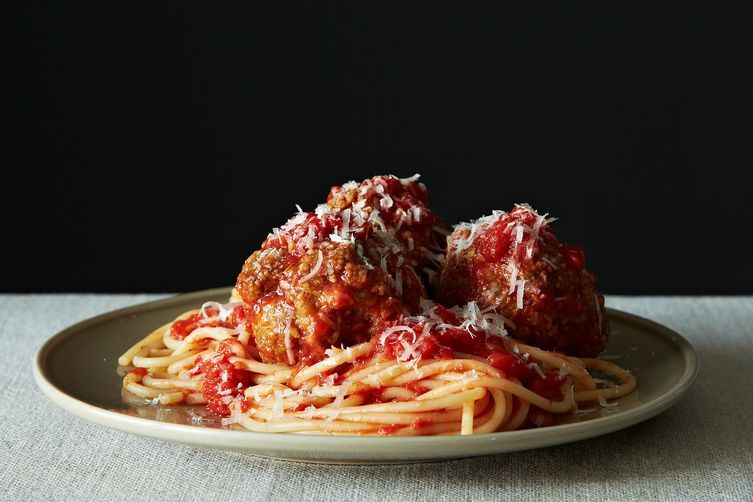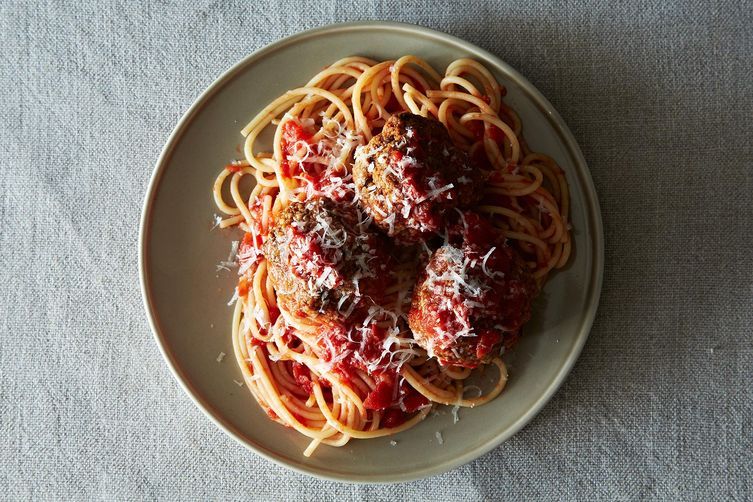
On our new weekly podcast, two friends separated by the Atlantic take questions and compare notes on everything from charcuterie trends to scone etiquette.
Listen NowPopular on Food52
Continue After Advertisement
11 Comments
sandy P.
August 25, 2013
Yes, there is good Italian-American food, cafone food, and Olive Garden! Here in New Haven there were a plethora of folks ready to define Italian food strictly within the confines of what their nonne made, anything else couldn't possibly be Italian. Risotto? Hah! Thank god things have changed.
pierino
August 25, 2013
Ah, New Haven! One of my best friends is of Sicilian descent, but grew up in Rome with six sisters and one brother. He spent much of his childhood in New Haven. Huge Italian community. My friend is now back in Italy in Assisi and his food tastes reflect that ecumenical background. One of the first restaurants he brought me to in Roma was Sardegnan. Apparently a lot of Italian immigrants thought they were headed for New York and wound up in Argentina instead.
sandy P.
August 25, 2013
I love the wines and foods of Sardegna I have had, including a nice meal at a tiny place in Rome near the Pantheon. I brought back four packs of fregola since there was no source for it in New Haven at that time. Malloreddus. Yum. My auto body guy is of Italian origin but grew up in Argentina.
pierino
August 25, 2013
Interestingly Roma is one of the few cities in Italy where you can taste the foods of the entire peninsula as well as the islands. The reason of course is that cardinals and politicians arrive with their own regional tastes (and cooks) to be catered to. You can actually find really good bolognese food in Roma if you know where to look.
sandy P.
August 25, 2013
That has been my experience. I make a mess with buccatini. Next trip is to Praiano in spring so we will be indulging in bufala mozzarella and fish, fish, fish.
cucina D.
August 24, 2013
thank you for differentiating between true Italian dishes and what we also call Italian American dishes developed here. In my home, with immigrant parents fro Sora, Italy (in Lazio), my Mammina Loreta and Nonna Assunta made their "sugo" every week in the same style they grew up with in Italy and our eggplant parmigiana was very traditional using only Parmigiano cheese and NO mozzarella. our gardens in summer were filled with stunning plum tomatoes that we canned every August along with pickled vegetables like cauliflower, eggplant, green beans and hot peppers that were stored for winter.
We never made Fettucini Alfredo as this was not a dish my family was familiar with at all, but we did make many versions of pasta al forno and pasta ala primavera along with traditional proteins like beef, lamb, pork, goat and rabbit.
We never made Fettucini Alfredo as this was not a dish my family was familiar with at all, but we did make many versions of pasta al forno and pasta ala primavera along with traditional proteins like beef, lamb, pork, goat and rabbit.
pierino
August 24, 2013
Fettucini Alfredo is a Roman dish going back to the 1930's. But not even the Romans care for it much anymore and the only people who go looking for it seem to be American tourists. And of course you now have Americanized versions like "chicken with Alfredo sauce", which have nothing to do with the original idea. Thank you Olive Garden and all your ilk.
When in Rome I always go straight to the Testaccio district which really is Rome's kitchen. You can find the real stuff there like abbacchio, coda alla vaccinara and pajata (the latter is not for everyone). But then I'm a hard core AS Roma "ultra". Forza curva sud!
When in Rome I always go straight to the Testaccio district which really is Rome's kitchen. You can find the real stuff there like abbacchio, coda alla vaccinara and pajata (the latter is not for everyone). But then I'm a hard core AS Roma "ultra". Forza curva sud!
Rebecca V.
August 23, 2013
Thank you for making this point! "Italian-American cuisine" is not representative of Italian cuisine as a whole! I might offer, however, that this is because the Italian-American style developed out of the largely southern provincial cuisines of the immigrants who came to the United States (Sicily, Campania, Calabria, etc.); many of the these dishes are, in fact, authentic. For example, petto di pollo alla parmigiana, polpette alla napoletana, parmigiana di melanzane are served in the US all the time as chicken parm, spaghetti with meatballs, and eggplant parm. Lasagna is authentic, as well; southern style found way more often in US than northern style, not surprisingly!
Not all Italian-American dishes are authentic, of course. But I think it's important to realize that Italian cuisine is vast, and what most Americans are familiar with via these popularized dishes is not definitive national cuisine, but rather a slice of the total culinary heritage of Italy.
Not all Italian-American dishes are authentic, of course. But I think it's important to realize that Italian cuisine is vast, and what most Americans are familiar with via these popularized dishes is not definitive national cuisine, but rather a slice of the total culinary heritage of Italy.
pierino
August 24, 2013
More on tomato sauce from Julia Della Croce http://zesterdaily.com/cooking/coluccio-heirloom-recipe-linguine-and-tomato-lunch-from-brooklyn/
pierino
August 23, 2013
Tomatoes, although a New World crop, were actually thriving in southern Italy from the 1830's on especially in the area of Napoli where the tomato met its soulmate in the volcanic soil of Vesuvio. So Italians were getting plenty of tomatoes. Even so it would be unlikely to a "red sauce" simmered for four hours unless a whole roast was being braised in it. Immigrants from Italy did indeed arrive from scarcity after 1900 and again after WWII. Tomatoes were easy to grow in backyard gardens and eve on roof tops.
Interestingly one Italian dish, spaghetti carbonara, seems to have appeared in Italy during the Liberation. American GIs were hungry for bacon and eggs. The Italians obliged with eggs and pancetta and pasta. This story may be apocryphal but it makes sense.
Also the Italian-American palate changed with the migration west from Ellis Island to places like St.Louis and Chicago and so old methods responded to new things.
Interestingly one Italian dish, spaghetti carbonara, seems to have appeared in Italy during the Liberation. American GIs were hungry for bacon and eggs. The Italians obliged with eggs and pancetta and pasta. This story may be apocryphal but it makes sense.
Also the Italian-American palate changed with the migration west from Ellis Island to places like St.Louis and Chicago and so old methods responded to new things.




See what other Food52 readers are saying.